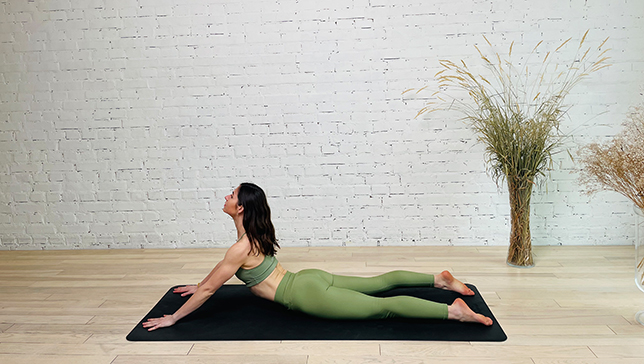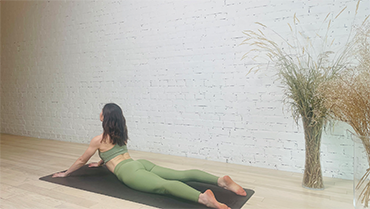Seal Pose - Bhujangasana Variations

Contents
Seal Pose, also known as Bhujangasana (Bhoo-Jung-Gaa-Suh-Nuh) is a yoga posture that involves lying on your stomach and lifting your chest off the floor while keeping your legs and pelvis grounded.
Seal pose requires more spinal flexibility and needs slightly more strength to hold.
The name of the pose comes from the shape of it. It resembles a seal laying on their tummy upright and having their arms beside their body. Seal pose requires almost the exact shape of the upright seal, with the same curve in the spine.
Seal Pose can help to strengthen the muscles of the back, shoulders, and arms, as well as stretch the muscles of the chest and abdomen. It can also help to improve posture and relieve mild back pain.
Pose Detail
- Body Position: Backbend Yoga Poses, Supine Yoga Poses
- Difficulty: Beginners
- By Type: Chest Opening Yoga Poses, Flexibility Yoga Poses, Shoulder Opening Yoga Poses, Strengthening Yoga Poses
- By Benefit: Yoga Poses For Digestion
Step-by-Step Instructions
Benefits and Contraindications
Tones the spine
Tones the abdominal organs
Stretches the spine and the back
Improves digestion
Helps calm the mind
Pregnancy second and third trimesters
Herniated disc, sciatica, or any other back injury
Recent abdominal surgery
Carpal tunnel syndrome
High blood pressure
Photo poses in different angles

Modifications and Props for Beginners
- If you find the pressure of the floor uncomfortable on your belly or chest, you can place a folded blanket under your torso to cushion the area.
- If you have trouble lifting your chest off the floor, you can use a strap to help support your upper body. Loop the strap around your chest and hold onto the ends with your hands as you lift up.
Useful Tips
- When lifting your chest off the floor, it’s important to move slowly and with control, using your back muscles rather than relying on momentum. This will help you avoid straining your neck or lower back.
- As you hold the pose, focus on breathing deeply and evenly, allowing your breath to guide your movements and help you relax into the stretch.
- Like any yoga pose, Seal Pose benefits from regular practice. If you’re new to the pose, start with just a few repetitions and gradually build up to longer holds and more repetitions over time.
Frequently Asked Questions
Seal Pose is generally safe for most people, but if you have a neck or back injury or any medical conditions, it is best to consult with a qualified yoga instructor or healthcare professional before attempting this pose. If you experience pain or discomfort while practicing Seal Pose, you should stop immediately.
Yes, beginners can do Seal Pose, but it is important to start slowly and work up to the full pose gradually. It is also important to practice proper alignment and breathing techniques to avoid injury and get the full benefits of the pose.
You can hold Seal Pose for as long as it feels comfortable for you, but it is recommended to hold the pose for at least 30 seconds to 1 minute to get the full benefits. You can also repeat the pose several times during your yoga practice.
Variations
- Sphinx Pose
- Cobra Pose
- Supported Seal Pose
- Upward Facing Dog Pose
Top Preparatory Pose
- Cat Cow Pose
- Table Top Twist Pose
- Sphinx Pose
- Child Pose